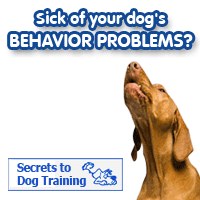Agility Dog Training – Go Steady!
Yes it is true that many dogs are very agile and love to chase a ball or frisbee, they love to run and many love to jump too…….so why train them to do agility?
Dogs naturally have muscular bodies, it is these muscles that contribute towards the dogs ability to run fast, jump, twist, turn, and leap, some are naturally amazing and gifted with their athletic talent and ability.
Agility dog training involves more than just teaching your dog to run fast or jump over obstacles. It entails teaching your dog specific vocal commands and hand signals by the owner on command, improving their slickness, ability and agility whilst performing certain stunts, and also improving their skills when dealing with obstacles.
This type of agility dog training would generally apply to show dogs that are required to perform certain tasks at a particular pace as per show requirements. These dogs also need to have good timing so they can keep in step with their owner’s timing.
Simply learning how to do these tasks are only part of the role as your agility dog needs to learn how to do the activities in a particular time, and often on set vocal commands or body signals.
Agility dogs are incredible to watch, they are often slick, agile, and very precise. But in teaching your dog to do agility, you must take care and give sensible consideration to dog agility activities that may be suitable for your dog.
Agility Dog Training – Points To Consider:
Most training clubs or schools will only accept dogs that are 18 months or older. This is to protect the dog from harm if it were any younger. Dogs under this age are still growing and developing and so performing stunts at such young ages can cause long term damage.
The size of dog also needs consideration because smaller dogs with shorter legs will sometimes struggle with jumps, but large dogs can find tunnels more difficult, and so your dog’s physical make up must be given careful consideration when entering into dog agility.
However dog training clubs or schools should bear all of these things in mind and will set tasks and training to ensure it lies within your dog’s capabilities. This of course must also be at the forefront of your training if you are dog agility training at home. It is easy to get carried away, but you must be careful not to overdo things or ask your dog to perform tasks he is just not able to do.
Positive Agility Dog Training:
It is much more constructive to reward your dog for trying, or for doing well. Do not punish your dog if he did not perform as you had intended. Chances are your dog will be confused if you punish him, he will worry and will not enjoy or want to perform in future if it becomes a negative or horrid experience.
Your rewards can be in the form of treats, patting, praising him vocally, favourite toy contact etc, these can all be used to show him that he has done well, and because of this he will enjoy the training. But don’t forget, not all dogs are the same, some breeds are more associated with agility, some will be more able than others, some will learn and respond quicker than others, some will love agility and others will loathe it, just be realistic and sensible,
Agility dog training should be enjoyable and happy times for dog and owner; it should not be a bad experience for either, working with your dog in harmony will create such a great bond and partnership.
Click Here For More Information On Science Dog Food
You Can Also See Where Sarchie Has Been On His Adventures By Clicking HERE

Leave a Reply